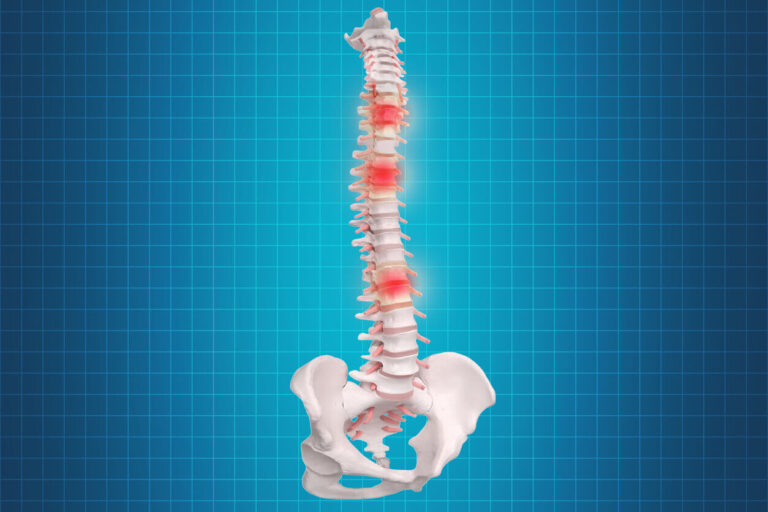Artificial Spinal Discs have revolutionized the treatment of chronic back pain, providing patients with an alternative to traditional spinal fusion by preserving mobility. Dr. Larry Davidson, an expert in minimally invasive spine surgery, understands that the long-term success of these implants heavily depends on their wear resistance. The durability of artificial discs is critical in maintaining functionality and minimizing complications over time. Evaluating wear resistance in spinal discs is essential to ensuring lasting outcomes and improving patient satisfaction.
Why Wear Resistance Matters
The primary function of an artificial spinal disc is to mimic the natural movement of the spine while relieving pain and supporting stability. Over time, repeated mechanical stress, such as bending, twisting and bearing loads, can lead to wear and tear of the implant. If an artificial disc lacks sufficient wear resistance, it may degrade, loosen or fail prematurely, resulting in complications that require revision surgery.
Ensuring that artificial discs are designed with long-term durability in mind not only extends their lifespan but also enhances patient confidence in the procedure. Advances in materials and testing methods are central to achieving these goals, making wear resistance a key consideration in disc design and manufacturing.
Factors Influencing Wear Resistance
The wear resistance of artificial discs depends on several factors, including material composition, biomechanical compatibility and surface treatments.
Material Composition is critical, as modern implants are often made from durable and biocompatible materials such as titanium, cobalt-chromium alloys or high-performance polymers. These materials ensure strength and reduce friction, allowing the disc to function effectively under daily mechanical stresses.
Biomechanical Compatibility plays an equally important role, as implants must replicate the spine’s natural range of motion to distribute stress evenly. Discs designed with this alignment in mind are less likely to experience uneven wear or premature degradation.
Surface Coatings and Treatments further enhance wear resistance by reducing friction and improving the implant’s ability to withstand mechanical forces. Technologies such as diamond-like carbon coatings or plasma treatments create smoother, more durable surfaces.
Testing for Long-Term Wear Resistance
Artificial spinal discs undergo rigorous testing to evaluate their durability and performance over time. These tests simulate real-life conditions to ensure the implants can withstand decades of use.
Simulated Wear Testing replicates millions of cycles of spinal movements, such as bending, twisting and loading. These accelerated tests provide insights into how the disc will perform under the mechanical stresses of everyday life.
Biomechanical Testing assesses how well the implant interacts with surrounding structures, such as vertebrae and muscles. Proper alignment and motion preservation are evaluated to minimize wear and ensure long-term success.
In Vitro Simulations replicate the biological environment of the spine, including temperature, moisture and pH levels. These conditions allow researchers to evaluate how materials resist degradation in the human body over time.
Innovations in Wear-Resistant Designs
Recent advancements in artificial disc technology have focused on improving wear resistance to ensure better long-term outcomes.
One significant development is the use of advanced materials with high durability and low friction coefficients. Hybrid materials that combine the strength of metals with the flexibility of polymers are gaining popularity because they can withstand repetitive motion.
Improved engineering techniques have enabled the creation of discs that closely replicate the spine’s biomechanics. By ensuring even stress distribution, these designs reduce the risk of wear and increase the implant’s longevity.
Patient-specific implants are also emerging as a promising solution. By tailoring implants to an individual’s unique spinal anatomy, surgeons can reduce the risk of improper fit, which contributes to uneven wear and potential failure. These customized implants enhance alignment and motion preservation, ensuring that the disc functions harmoniously with the surrounding structures.
Additionally, patient-specific designs help minimize stress on adjacent vertebrae, reducing the likelihood of future complications and the need for revision surgeries.
The Benefits of High Wear Resistance
The durability of artificial spinal discs offers numerous benefits for patients. Long-lasting implants reduce the likelihood of complications and revision surgeries, allowing individuals to maintain a higher quality of life. Wear-resistant discs also preserve natural movement and alignment, ensuring sustained functionality over time.
Improved durability leads to greater patient satisfaction, as individuals can enjoy pain-free mobility for years without concern about implant degradation. Additionally, these advancements reduce healthcare costs by minimizing the need for follow-up procedures and associated expenses.
Future Directions in Wear Resistance
The future of artificial spinal discs is focused on continuous innovation to enhance wear resistance. Nanotechnology is being explored to create ultra-smooth surfaces that significantly extend implant lifespan. Smart materials, which adapt to mechanical stress and self-heal over time, are also gaining attention as a way to improve durability.
Furthermore, advanced imaging technologies are being integrated into testing protocols to provide real-time feedback on stress points and wear patterns. These developments are expected to refine implant design further and ensure even greater precision and performance. By analyzing detailed imaging data, researchers can identify potential weaknesses in implant materials and adjust designs accordingly. This continuous improvement process enhances implant longevity, reduces failure rates and ultimately leads to better patient outcomes.
A Durable Solution for Long-Term Mobility
Dr. Larry Davidson explains, “Over time, we have seen how minimally invasive spinal surgical techniques have resulted in a decrease in the length of certain surgeries, hospitalization time, potential for postoperative infection and readmissions to the hospital. All of this results in improved patient satisfaction.” These advancements allow for greater surgical precision, reducing tissue disruption and leading to faster recovery times with fewer complications.
The long-term wear resistance of artificial spinal discs is a critical factor in their success, directly impacting patient outcomes and quality of life. By leveraging advanced materials, innovative designs and rigorous testing protocols, manufacturers and surgeons are working together to ensure that these implants stand the test of time.
Understanding the importance of wear resistance is key to making informed decisions about spinal disc replacement for patients considering the procedure. With advancements in technology and ongoing innovation, artificial spinal discs continue to offer a promising solution for restoring mobility and improving quality of life.
